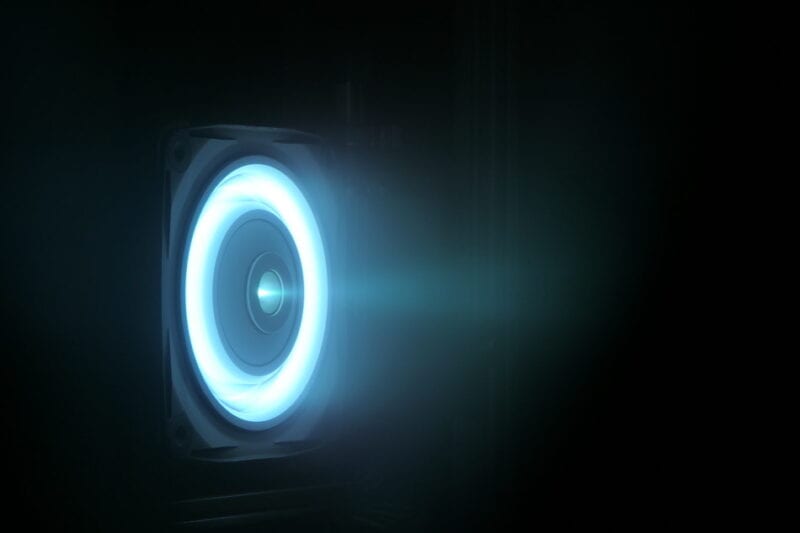Maxar, Busek Test Electric Propulsion System for NASA’s Gateway

Busek BHT-6000 Hall effect thruster. Four such units will provide maneuverability for the Power and Propulsion Element (PPE) of NASA’s Gateway in lunar orbit.
Maxar Technologies and Busek Co. successfully completed an end-to-end hot fire test for NASA as part of an effort that could lead to the first electric propulsion-powered crewed space mission in history.
The test, announced Thursday, validated all major elements of a 6 kW solar electric propulsion subsystem for the Power and Propulsion Element (PPE) that the two partners are developing for NASA’s Gateway in lunar orbit. Maxar built high-power control electronics (PPU-6000) for the system and incorporated a xenon feed system built by Moog. Busek contributed its electric BHT-6000 Hall effect thrusters. When combined, the PPE provides power, maneuvering, attitude control, and communications systems for the NASA lunar orbiting outpost.
“Busek’s BHT-6000 electric thrusters offer high-power capabilities at a competitive price point and are a great fit for both our near-Earth and deep space programs,” said Maxar Senior Vice President of Space Capture Robert Curbeam.
Maxar inherited this project through its subsidiary, SSL, which partnered with Busek in 2016 to develop electric propulsion technologies for NASA and other U.S. government agencies.
Gateway is part of NASA’s Artemis program, which aims to land the first woman and next man on the Moon and enable future crewed missions to Mars. NASA is managing the program from the Glenn Research Center in Cleveland, Ohio.